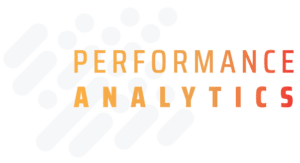WHY PERFORMANCE?
The arts, perhaps more than all other industries, have been impacted by the rapidly changing cultural, economic, and global health landscape. Accessing the data behind successful responses and outcomes is critical to the prosperity of every Performing Arts Center.
Benchmarking allows arts organizations to understand and promote best practices–in programming, hiring, and operations–and transform that understanding into competitive advantage. Data-backed strategies have a definitive edge when vying for talent, public attention, and funding.
Performance Analytics maintains the largest repository of Performing Arts Center operational data in the world, and is the trusted source for hundreds of leading arts organizations across North America.
Every arts organization is unique. However, they share similar concerns and ambitions when it comes to talent acquisition, programming, and fulfilling mission.
Performance Analytics offers a vast and dynamic array of metrics to measure success. From financial performance, to salary comparisons, to ticketing and venue usage, the platform allows you to curate intelligence and build successful strategies tailored to your goals.
The key to Performance Analytics’ tremendous value is our unparalleled aggregated data, contributed from Performing Arts Centers across North America. In order to view and analyze this macro data, Performance subscribers must submit data from across their own organization on an annual basis.
Our submission platform takes advantage of information you may already have available, or would benefit greatly from having organized. This includes box office reporting, annual financial statements, staffing data, and event histories.
Data may be collected and inputted by one dedicated member on your team, or submitted in a distributed process by several team members; our flexible platform supports either approach.
Our exceptional Compensation tool moves beyond basic salary comparisons and helps you analyze whether your Performing Arts Center is living up to its mission.
Performance Analytics has the capability to report on over 100 positions, across more than 20 departmental functions.
It provides a deep dive into the demographics of the organization’s people, including tenure, race, sex, education level, and age cohort, giving you a clear picture of how your team reflects your values and goals over time.
Performance Analytics provides a tremendous amount of insight and analytics into the status of your organization and that of peer groups.
To help you navigate and optimize the use of these metrics, AMS has created the proprietary Performance Analytics Roadmap. This guide leads you through a structured 12-month process to absorb, report, and act on the data provided by the Suite.
To get started with this Roadmap, click here.
Benchmarking enables leaders in the cultural arts to move beyond reporting activity and instead measure evidence of goals achieved and growth envisioned.
With the trove of Performance Analytics data, arts organization leadership can understand the competitive landscape and use analytics insights to develop strategies informed by longitudinal trends. Leadership can then articulate the organization’s position relative to its trajectory, as well as support major successes to stakeholders, civic leaders and the public.
When new leadership steps into place in a performing arts center, their chief concern is to learn about the organization they now steward–staff, financial history, programming, and general operations.
In addition to personal interviews with team members and the reflections of civic leaders and board members, new arts leaders are best served by evidence–hard data–to gain a clear picture of where the organization has been, and where it’s going.
Only data like that provided in Performance Analytics can communicate a tremendous amount of history and direction in a simple, straightforward interface, and covers all major components of your organization, setting your new leader up for success.
Plain and simple, subscribers own their own data.
If your organization is non-profit, 990 data is already publicly available. Beyond that dataset, submitted data is only available to other Performance Analytics subscribers as part of the aggregated macro data and trends, never on an individual or searchable basis.
From time to time, we may conduct bespoke studies for the benefit of its subscribers. Those studies may include analysis of aggregated data collected through our platform.
solutions



